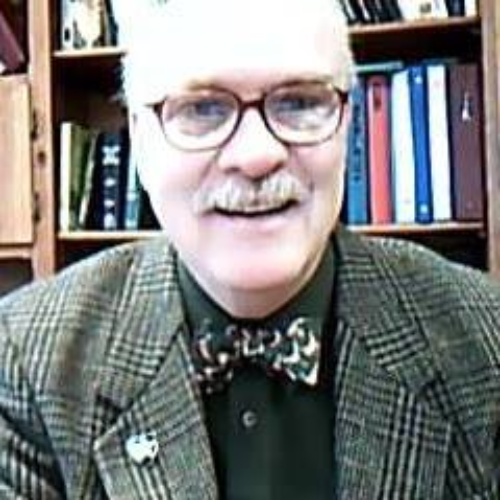-
Responding To Jesus' Call
Contributed by Robert Leroe on Nov 28, 2017 (message contributor)
Summary: Appraising our discipleship as a New Year approaches
“Responding to Jesus’ Call”
Rev Dr Leroe, Cliftondale Congregational Church, Saugus, Massachusetts
Outline:
A. Andrew and John, vss 35-39
B. Andrew and Peter, vss 40-42
C. Philip and Nathanael, vss 43-51
Introduction:
We’ve read a record of how the earliest believers became followers of Jesus. Andrew and John became disciples through their teacher, John the Baptist. Peter came to Christ through his brother Andrew’s encouragement. Jesus seeks out Philip, who then goes looking for Nathanael. This progression provides a model for personal evangelism—bringing people to Jesus by telling others what He means to us.
The word “disciple” occurs 269 times in the New Testament. This designation could be translated “learner” or “apprentice” It was common in Bible days for people to attach themselves to a teacher. Jesus’ disciples would learn by listening and doing. Experiential knowledge is putting learning into life. Discipleship is following Jesus in an attitude of study, obedience, and imitation. Discipleship means embracing a Christian worldview and lifestyle.
A. Andrew and John (verses 35-39)
In vss 35-39, two of John the Baptist’s followers leave and follow Jesus. We learn from vs 40 that one of them is Andrew. Scholars believe the other is John, the writer of this Gospel. Why did they leave John the Baptist? Because that’s what he wanted them to do. His mission was to point the way to Jesus. John said of Jesus, “He must increase, but I must decrease (3:30). John was the mentor, Jesus is the Master. Jesus is what John could never be, the Savior of humankind. John’s mission is ours as well, to point people to Jesus.
John calls Jesus the “Lamb of God”, a clear reference to the Jewish Passover and the lambs used in the daily temple sacrifice for sin. This title reveals Jesus as our substitutionary sacrifice.
Jesus asks them, “What do you want?” We might also ask ourselves, “What do we expect to receive from Jesus?” Jesus is helping them to define their intentions, purposes and goals. Were they looking for a political leader? A philosopher? An economist? A military strategist? Or do they want a Savior who will transform their lives by the work of God?
They ask, “Where are you staying?” This indicates a serious commitment. They weren’t coming to casually check Jesus out with a passing glance. Their intention is to leave their present situation and move in with Jesus.
Jesus replies, “Come and see.” Here is an invitation for us all to consider the claims of Christ, to find out Who Jesus is! Jesus is inviting these men to discover something more than where He is residing. He is inviting them to discover an insight into the plan of God. He is inviting them to know God, the greatest knowledge of all. All that follows is a commentary on these words, “Come and see.”
B. Andrew and Simon Peter (Verses 40-42)
After spending a day with Jesus, Andrew rushes to find his brother Simon, to tell him he has found the “Messiah” (the Hebrew term), which is then translated into Greek, the “Christ”. This title in English means “the Anointed One.” This designation is used in the Old Testament to signify the prophets (Ps 105:15), the High Priest (Lev 4:3) and also the king of Israel, (I Sam 16:6). This is one reason why Jesus is regarded as our Prophet, Priest, and King. It’s impressive to note that whenever we find Andrew in John’s Gospel, he is bringing someone to Jesus.
Jesus changes Simon’s name to “Cephas”, the Aramaic word for “stone”, which in Greek is Petros (our English equivalent being Peter). It is a sign that he will become a new man in Christ. Abraham was called the rock from which Israel was formed. Peter was to be transformed into the leader of the early Christian church. Jesus saw Peter, not as he was, but as he would someday be, a foundation stone in the building of the First Century church. Peter is not seen as a rock in the Gospels, but he becomes a solid rock in the days of the early church. Christ gives us the “power to become” (1:12) all that He has in mind for us.
C. Philip and Nathanael (Verses 43-51)
Jesus then departs to Galilee and seeks out Philip. Verse 43 says that He found Philip, suggesting that this meeting was not accidental. Philip, Andrew, and Peter were from Bethsaida, which means “house of the fisherman”. At least seven of the twelve disciples were fishermen. Bethsaida was east of where the Jordan River enters the Sea of Galilee. It would be where some significant miracles of Jesus would occur (feeding of the multitudes, blind man healed).
Philip seeks out Nathanael, explaining that he has found the one Moses and the prophets wrote about. Philip was a thoughtful seeker—he had read the Scriptures and was looking for the Messiah. This is how Christianity grows-—one person telling another, sharing the Good News. Philip declares that Jesus is the fulfillment of Old Testament prophecy. Nathanael doesn’t share Philip’s enthusiasm, and scoffs, doubting that anything good could come from Nazareth. Nathanael’s hometown was in nearby Cana, 4 miles from Nazareth.

 Sermon Central
Sermon Central



